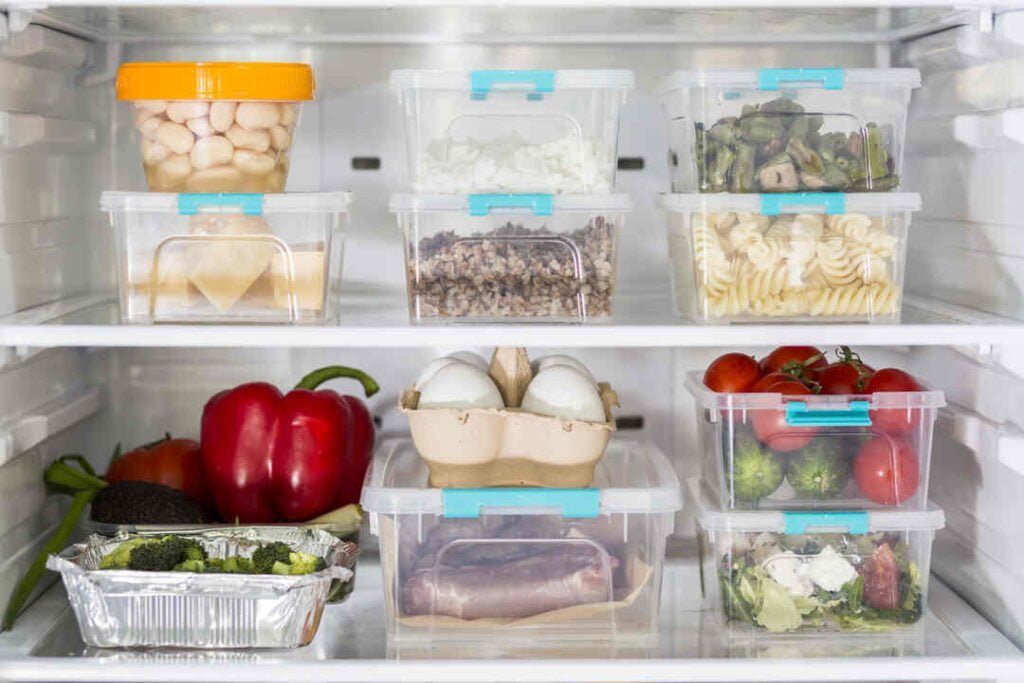
Refrigerator organization is essential for preserving freshness, reducing food waste, and increasing storage capacity.
We asked five experienced organizers how to organize a refrigerator. They talked us through their favorite fridge organization tactics and offered some of their favorite products for the job.
Here are some tips on How to organize the refrigerator:
Table of contents:
- Why organizing your refrigerator is important?
- 10 to steps on how to organize refrigerator
- A little more help
- Conclusion
- FAQ’s
Before getting into how to organize refrigerator, let’s talk about why it is important to organize a refrigerator righteously.
Why organizing your refrigerator is important:
01- Food safety:
Is improved by proper organization since it prevents cross-contamination. You may limit the chance of bacteria spreading to ready-to-eat meals by separating raw meats from other foods and storing them on lower shelves
02- Reduces Food Waste:
An organized refrigerator allows you to see what you have and consume it before it spoils.
You can readily recognize what has to be consumed first by putting comparable goods together and arranging them depending on their expiration dates, reducing food waste and saving money.
03- Maximizes Storage Space:
Efficiently organizing your refrigerator helps to maximize available storage space.
You may neatly stack goods by using containers, bins, and drawer organizers. Make the most of the refrigerator’s capacity by utilizing vertical space
04- Saves time and energy:
Organizing your refrigerator so that you can quickly find what you need without having to rummage through messy shelves.
Additionally, knowing how many amps does a refrigerator use can help you manage energy consumption more efficiently.
05- Maintains Freshness and Quality:
The proper organization aids in the preservation of food’s freshness and quality. You may increase the shelf life of perishable foods by storing them in specific sections, controlling humidity levels in drawers, and keeping the refrigerator clean.
You should know how does a refrigerator work in maintaining the freshness and quality of products.
10 to steps on how to organize refrigerator
1- Clean and declutter your refrigerator:
Begin by emptying the refrigerator and cleaning the shelves, drawers, and compartments. Throw away any expired or damaged food.
2- Separate into Categories and groups:
Sort related things into categories such as dairy, meat, fruits, vegetables, condiments, and so on. This will help you find certain goods and keep your refrigerator organized.
3- Utilize Storage Containers:
Invest in transparent, airtight storage containers to store smaller goods such as leftovers, sauces, and snacks. This will keep them in order, prevent spills and better use of space and other steps on how to organize refrigerator.
4- Arrange by Priority:
Keep things you use frequently at eye level so they are not difficult to get to. Keep milk, eggs, and flavors on the main shelf, and raw meats ought to be kept on the bottom shelf to hold them back from getting dirty.
5- Use Drawers Wisely:
Vegetables and fruits should be stored in the refrigerator drawers. To prevent them from rotting, organize it using various compartments or bags.
6- Label and Date:
In order to maintain the freshness label the containers and packages with the date of purchase or preparation, which prevents the consumption of items that have expired.
7- Optimize Freezer Space:
The most important part in how to organize refrigerator is to arrange the refrigerator by separating various kinds of frozen foods with bins or baskets. Stack items neatly and label them clearly for quick and simple identification.
8- Rotate and inspect items on a regular basis:
Investigate for expired things and place older items to the front for use before fresher ones. This will assist to reduce food waste.
9- Maintain Temperature and Humidity:
To preserve the freshness and nutrients of your food, keep your refrigerator at the ideal temperature. Wondering how cold should a refrigerator be, You can optimize the fruits and vegetables storage by using the drawer’s humidity settings.
10- Regular Cleaning:
To keep your refrigerator clean and organized, schedule periodical cleanings. Spills should be wiped up immediately, and shelves and drawers should be removed and cleaned on a regular basis.
You may construct a well-organized refrigerator if you follow our guide on how to organize refrigerator that promotes food safety, eliminates waste, and makes it easier to find and access the things you need by following these steps.
For info on cleaning, read our help guide on how to clean refrigerator.
A little more help!
After a brief look at how to organize refrigerator, we tried to give you a little help on how to manage your stuff easily.
Raw meats:
Prevent cross-contamination by: storing meat on the bottom shelf or in a separate meat box.
Dairy products:
Milk, yogurt, cheese, and other dairy products must be placed on the middle shelves where the temperature is most stable.
Leftovers, cooked meats:
Other ready-to-eat goods should be stored on the upper shelf to avoid contamination from raw foods.
Condiments and sauces:
Keep condiments, sauces, dressings, and other similar goods on the entryway shelf, which is slightly warmer.
Fruits and vegetables:
To maintain the freshness and preventing it from going bad store them in designated crisper drawers or separate containers.
Eggs:
Store eggs in their original cartons on a shelf rather than on the refrigerator door, which is susceptible to temperature variations. Read more on how long can you keep eggs in the refrigerator.
Beverages:
Keep drinks such as water, soda, and juice on the entrance shelves or in a designated place.
Conclusion:
By implementing these organization techniques, you can enjoy a more efficient and enjoyable cooking experience while making the most out of your grocery purchases.
I hope you enjoyed our guide on how to organize refrigerator.
If you’re considering an upgrade, read our guide on the best undercounter refrigerator for added convenience and storage efficiency.
Moreover, discover What is counter depth refrigerator to enhance your knowledge.
FAQ’s;
Where should everything go in a fridge?
To prevent cross-contamination, raw meats should be stored on the bottom shelf of a refrigerator or in a separate meat drawer. Since the temperature is most steady in the middle shelf, milk, yoghurt, and cheese should be kept there. Keep ready-to-eat meals, such as leftovers and cooked meats, on the top shelves to prevent contamination from raw items. On the front shelves, which are a little warmer, condiments, sauces, and dressings can be stored. Fruits and vegetables should be kept in separate containers or specialized crisper drawers to maintain freshness.
What should go on each shelf in fridge?
For perishable goods like milk, yogurt, and cheese, as well as other dairy items that require a constant temperature, the middle shelves are ideal. In order to stop any drips or spills from contaminating other items, raw meat, seafood and poultry, should always be stored on the lowest shelf. The door shelves are ideal for condiments, sauces, dressings, and other items with a longer shelf life since the temperature on the door varies more.
How do you arrange things in a small fridge?
It is critical to maximize available space when organizing a tiny fridge. This will make you know how to organize refrigerator. To make the most of vertical space, use stackable bins and organizers. Consider grouping comparable goods together and utilizing smaller containers or bags for items such as cut fruits and vegetables. Make use of any adjustable shelves or drawers to tailor the space to your needs. Check for expired or rotten foods on a regular basis to clear up space and maintain freshness.
Why should you organize your refrigerator?
There are various advantages to organizing your refrigerator. For starters, it keeps your food fresh and prevents rotting by ensuring that perishable products are appropriately stored. By reducing cross-contamination between raw and cooked foods, proper organization can also aid improve food safety. Furthermore, an organized refrigerator provides for improved ventilation and temperature dispersion, resulting in more effective cooling and energy savings.









